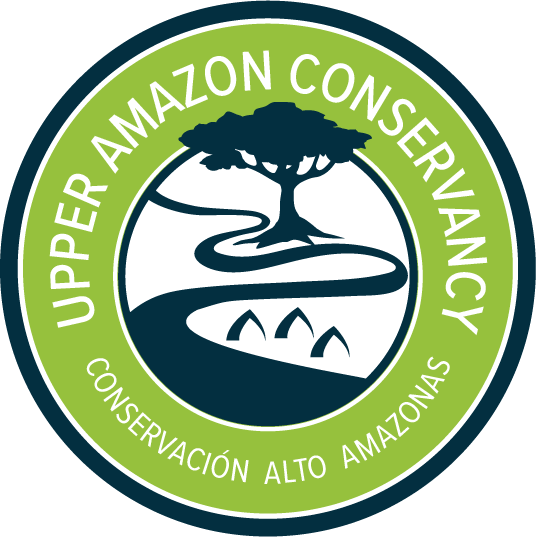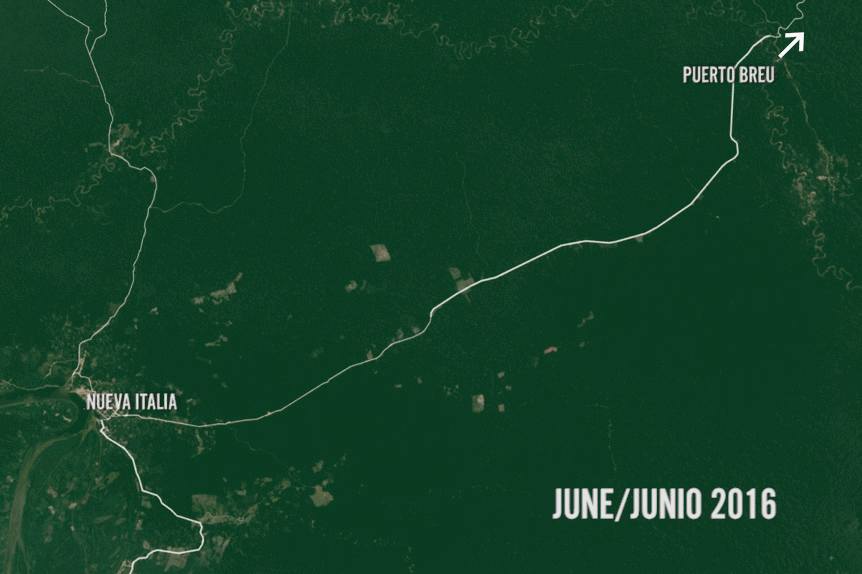Illegal Road Threatens the Yurua Region
Update August 17, 2021: Yurua Leaders Confront Invading Loggers
A road is being constructed illegally by loggers and land traffickers to connect the remote Yurua River region with the Ucayali River and the rest of Peru despite opposition from the local indigenous tribes. Road proponents claim the road will provide social and economic benefits to Yurua residents by facilitating trade with Acre, Peru. However, the road is being constructed without any regard for environmental laws or indigenous rights. Loggers and coca farmers are already using cleared parts of the road and the local communities fear future impacts to their territories, resources and way of life.
The Yurua is one of the most remote and intact regions in the Amazon, home to six indigenous tribes including some of the last voluntarily isolated tribes in the world. If completed, the highway will provide loggers, land speculators and other outsiders with easy access to indigenous territories and intact protected areas including the Alto Purús National Park, the Murunahua Indigenous Reserve for isolated tribes and the Yurua Communal Conservation Concession.
As of August 2020, there were at least 6 illegal, clandestine airstrips near the road being constructed between the logging center of Nueva Italia on the Ucayali River and the small town of Puerto Breu, capital of the Yurúa region, evidence that the road is already being used to transport drugs to Brazil (click to enlarge).
Coca Invasions in Ucayali
Road are often promoted as the answer to improving lives in remote areas of the Amazon. However, local people are rarely if ever involved in the planning processes, and without adequate enforcement of land rights and environmental laws, the roads cause deforestation due to logging, the expanding agricultural frontier and drug activity, as well as a myriad of negative social impacts on the local people. The Interoceanic Highway in Peru’s Madre de Dios region is a frightening case study of the impacts of roads on the forests and people of the Peruvian amazon.
Approximately 60 kilometers of the Yurua road has already been constructed from the logging center called Nueva Italia and is facilitating a mass migration of farmers from Peru’s central jungle who are aggressively clearing virgin forest to plant coca. This phenomenon—the migration of farmers from the valley of Apurimac, Ene and Mantaro rivers (VRAEM), Peru’s major coca producing region, is occurring in many remote, lowland watersheds in Ucayali. (See investigation of coca invasions in the nearby Urubamba watershed). Satellite imagery show dramatic, recent deforestation along the section of the Yurua road that is already functional.
Increased deforestation along the old logging road being improved to connect Nueva Italia to Puerto Breu, Yurua from June 2016 to September 2020, with a dramatic increase since 2019. (Source: 2020, Planet Labs Inc. thanks to the Norwegian International Climate and Forest Initiative, compiled by David Weiss, CEES, WFU).
New Indigenous Alliance Opposes Road
In March 2021, the Yurua’s three indigenous organizations formed an alliance to begin organizing and educating local communities on the road. The Alliance is comprised of the presidents of the Yurua indigenous federation (Aconadiysh), the Yurua Communal Conservation Concession and the environmental association of Dulce Gloria, the region’s largest community. Later in the month, UAC led a two-week river trip to each of the Yurua’s 16 communities to enable Alliance members to present information on the road, discuss concerns and strategize about demanding that authorities respect their territorial and legal rights. In April, the communities convened for regional indigenous congress to develop a position statement on behalf of all communities to present to authorities.
Learn More
Ucayali’s Indigenous Federation, ORAU, Rejects New Road Bill
Yurua’s Indigenous Federation, ACONADIYSH, Signs Declaration Rejecting the Road
Learn More about the Road and the work of the Yurua Alliance to Oppose it

